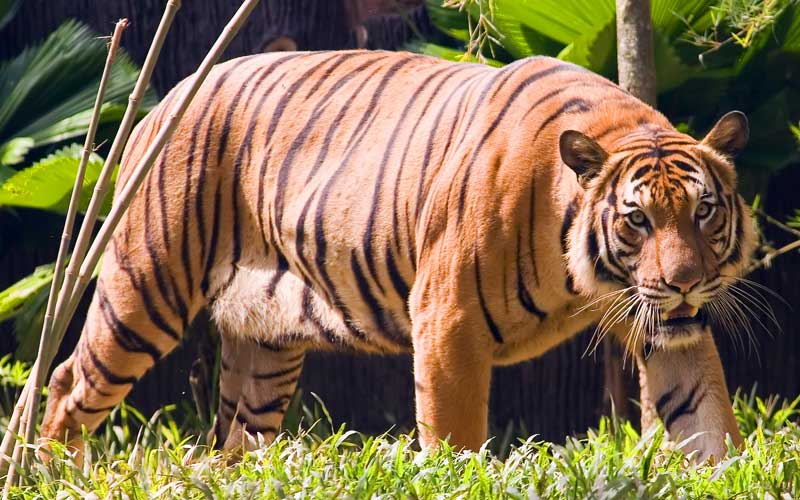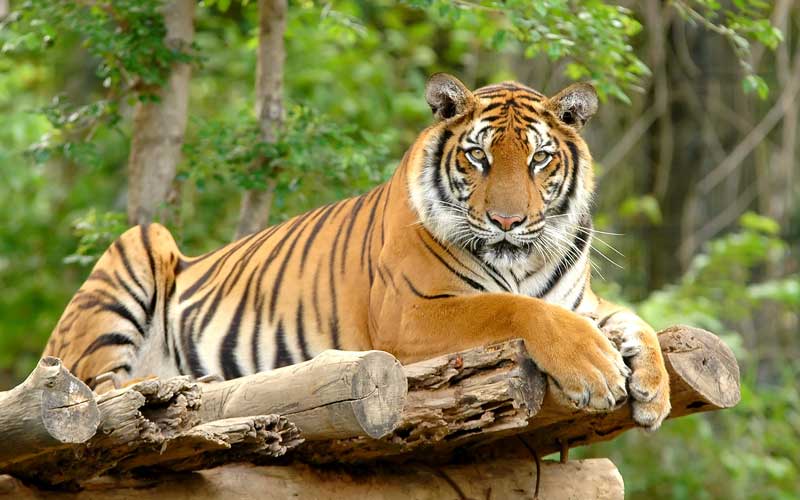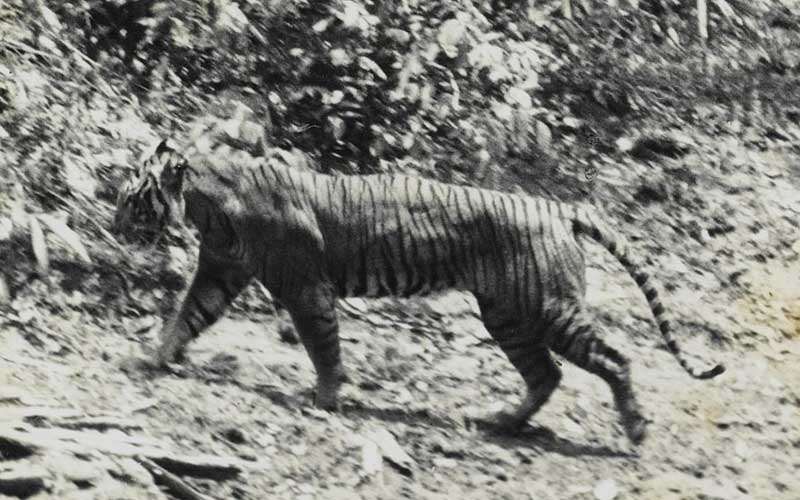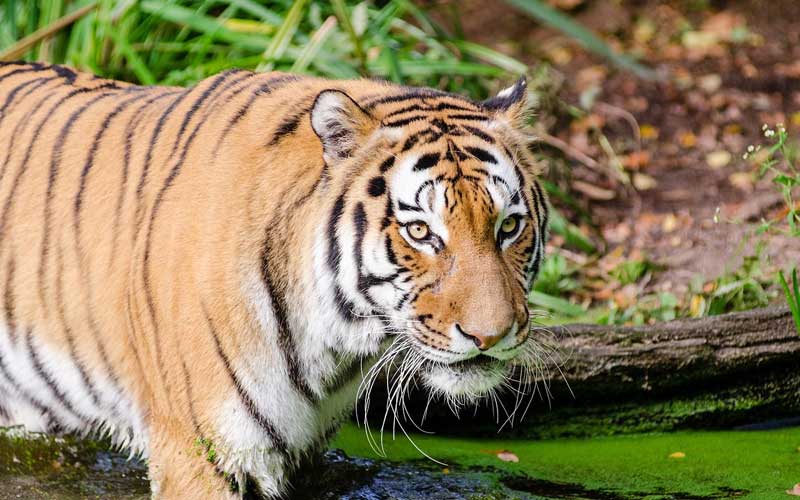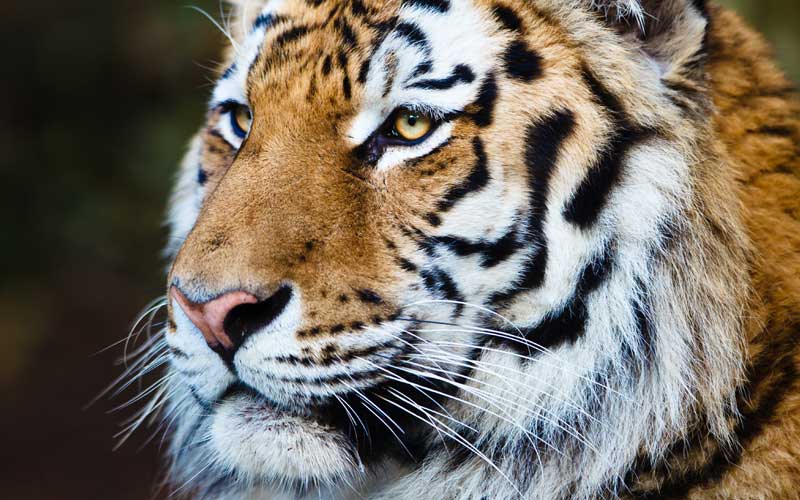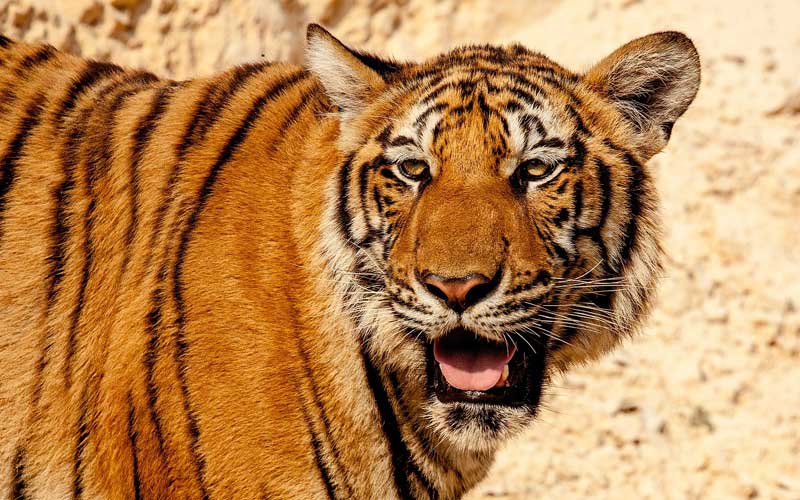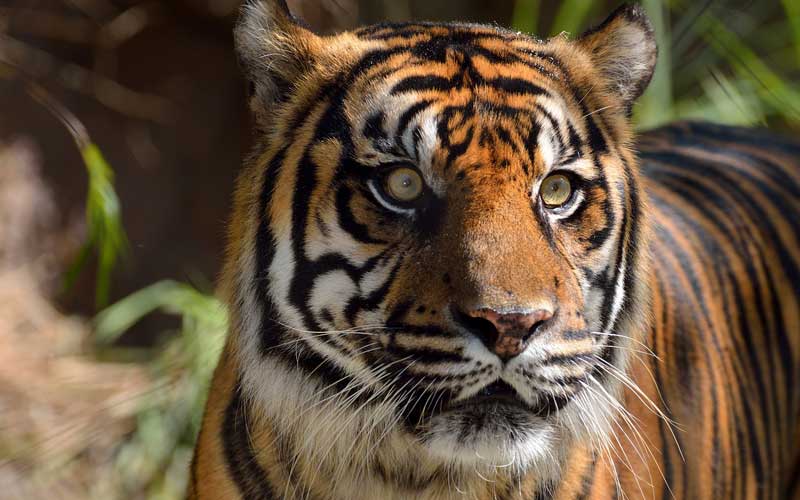Malayan Tiger – Panthera tigris jacksoni
This tiger is the most recently recognized subspecies and the national animal of Malaysia. Until a few years ago it was considered the same subspecies as the Indochina tiger, but based on the genetic analysis it was discovered that they are different. Panthera tigris jacksoni emerged as a subspecies in 2004.
Its scientific name comes from the tiger conservationist Peter Jackson, but in the Malay language, it is called Harimau or just Rimau.
Order: Carnivora
Family: Felidae
Genre: Panthera
Species: Panthera tigris
Subspecies: Panthera tigris jacksoni
PHYSICAL DESCRIPTION
Apparently, the Malayan Tigers are smaller than the tigers living in India. Given the short time since it is considered a subspecies, the data comes from some specimens and is scarce.
Males measure about 102 inches and females about 94 inches in length. However, the size information from 16 tigresses living in the state of Terengganu was on average 32 inches and weighed 53-194 pounds, while males measured an average of 37 inches and had weights of 104 to 284 lbs.
DISTRIBUTION AND HABITAT
Evidently, this subspecies dwells in Malaysia, specifically in the south and center of the Malay peninsula, as well as the southern tip of Thailand. Tiger populations in northern Malaysia are contiguous to those living in the south of Thailand. Tropical and subtropical forests make up their habitats.
There are three subpopulations in the Malay peninsula, but it seems unlikely that they are more than 250 sexually mature individuals.
FEEDING
The Malayan tiger has a carnivorous diet. It is a powerful predator that attacks by surprise wild animals and sometimes even domestic livestock. Its usual diet includes muntjacs, sambars, wild boars, bearded pigs, deer, tapirs, goats, monkeys and other wild pigs. When it finds the possibility, it can prey on offspring of large animals such as elephants, rhinoceroses, and bears.
BEHAVIOR
An adult Malayan tiger shows an individual behavior but can hunt in groups if necessary. It performs the same hunting style of other subspecies of tigers: it silently stalks the prey from a discreet distance, then approaches without making any noise and catches the animal. It can hold the prey with its front legs and bite its neck to kill it quickly.
Due to the low density of prey, the amount of the Malaysian tigers is also small. Interestingly, the areas where these and other large predators have disappeared hold a high presence of wild boars, which can become a pest.
The information about their social structure and behavior is still insufficient.
REPRODUCTION
Some think that this species can mate from approximately four years of age. The female gestates its offspring for about 100-110 days and gives birth to 2-5 cubs in a shelter that is usually cave. They receive maternal care for several months until they become independent at about 18 months of age.
This subspecies is in danger of extinction, according to the IUCN.
THREATS AND CONSERVATION
Beyond the attacks of leopards, snakes and other Tigers to Cubs, the Malayan tiger finds in humans its most dangerous predator. They cause habitat loss and are the responsible of poaching these cats to meet the Asian demand for body parts used in traditional medicine.
Excessive logging, conversion of forests into agricultural land and construction of buildings are some of the activities that reduce tiger’s habitat and generate conflicts with people over the territory, besides motivating them to attack domestic livestock which annoys the owners and kill these cats in consequence, because they killed their animals.
This subspecies is in danger of extinction, according to the International Union for Conservation of Nature (IUCN). Also, it is included in Appendix I of CITES, in the group of endangered species. Some zoos have implemented captive breeding programs to protect the species, but the populations are still declining.
There is a huge breeding facility in Malaysia to help increase the population of Malayan Tigers. In the past years, they have been successfully breeding several Malayan tigers, and their cubs have been sent to various zoos around the world to help keep them safe. The number that breed is still low though due to the significant amount of testing that must be done to verify that the genetic code of the mating tigers isn’t too similar. This control prevents physical deformities, and other inconveniences caused by inbreeding.
In spite of the name, there is no doubt that Malaysia is extremely proud of this discovery. In fact, many businesses have it as part of their logo or their brand identity. The Coat of Arms has also been updated to add these tigers to its design.
References
Tigers of the World: The Science, Politics and Conservation of Panthera tigris. Ronald Tilson, Philip J. Nyhus. Academic Press, 2009.
Tiger Tales: Tracking the Big Cat Across Asia. Ke. Ullāsa Kāranta. Penguin Books India, 2006.
https://www.worldwildlife.org/species/malayan-tiger
https://en.wikipedia.org/wiki/Malayan_tiger
https://www.zoo.org/conservation/tigers#.WTmx_xM1_MU

